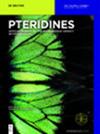SuPAR和新蝶呤水平对癌症患者预后的影响
IF 0.9
4区 医学
Q4 BIOCHEMISTRY & MOLECULAR BIOLOGY
引用次数: 1
摘要
背景:两种独特的生物标志物,尿激酶型纤溶酶原激活物受体(suPAR)的可溶性形式和新蝶呤,在炎症过程中起着至关重要的作用。本研究旨在揭示是否有可能利用这些生物标志物来预测肺癌患者的肿瘤预后。方法:本研究设计为单中心、前瞻性、对照研究。本研究于2016-2020年在Kırıkkale大学医学院进行,选取40例肺癌患者(病例组)和41例健康个体(对照组)。病例组也分为早期和晚期两个阶段。抽取血样评估suPAR和新蝶呤水平,并在病例组和对照组之间比较这些参数。此外,年龄、肿瘤分期和上述参数的水平对预后的影响也进行了生存分析。结果:中位随访时间为32(4-75)个月。病例组的suPAR和neopterin水平高于对照组。Cox回归显示,高水平的新蝶呤和suPAR增加了死亡风险[p=0.002, HR: 1.25 (1.08-1.45 95%CI)和p=0.023, HR:1.07(1.01-1.13)]。最后,发现肿瘤的年龄和分期与生存没有关系。结论:suPAR和neopterin作为炎症通路的成员在癌症患者中较高。此外,suPAR和新蝶呤水平均可预测肺癌患者的死亡率;因此,它们被认为可以用于癌症的治疗。本文章由计算机程序翻译,如有差异,请以英文原文为准。
Prognostic effects of SuPAR and Neopterin Levels on Patients with Lung Cancer
Abstract Background: Two unique biomarkers, soluble form of the urokinase-type plasminogen activator receptor (suPAR) and neopterin, play a crucial role in inflammatory processes. This study aimed to reveal whether it is possible to utilize these biomarkers in predicting tumor prognosis in patients with lung cancers. Methods: The present study was designed as a single center, prospective, and controlled research. The study was conducted with forty patients with lung cancer (case group) and 41 healthy individuals (control group) in Kırıkkale University, Faculty of Medicine between 2016-2020. The case group was also divided into two of the early and advanced stages. The blood samples were drawn to evaluate suPAR and neopterin levels, and these parameters were compared between the case and control groups. Also, the prognostic effects of age, stage of the tumor, and the levels of mentioned parameters were investigated with the survival analysis. Results: The median duration of the follow-up was 32 (4-75) months. suPAR and neopterin levels were found to be higher in the case group than in the control group. Cox regression showed that the high levels of neopterin and suPAR increased mortality risk [p=0.002, HR: 1.25 (1.08-1.45 95%CI) and p=0.023, HR:1.07 (1.01-1.13), respectively]. Finally, age and stage of the tumor were found to have no relationship with survival. Conclusion: suPAR and neopterin as members of the inflammatory pathway were found to be higher in cancer cases. Furthermore, both suPAR and neopterin levels were found to be predictive for the mortality of patients with lung cancers; therefore, they are thought to be used for the management of cancer.
求助全文
通过发布文献求助,成功后即可免费获取论文全文。
去求助
来源期刊

Pteridines
生物-生化与分子生物学
CiteScore
1.20
自引率
25.00%
发文量
6
审稿时长
>12 weeks
期刊介绍:
Pteridines is an open acess international quarterly journal dealing with all aspects of pteridine research. Pteridines are heterocyclic fused ring compounds involved in a wide range of biological functions from the color on butterfly wings to cofactors in enzyme catalysis to essential vitamins. Of the pteridines, 5,6,7,8-tetrahydrobiopterin is the necessary cofactor of several aromatic amino acid monoxygenases, the nitric oxide synthases and glyceryl ether monoxygenase (GEMO). Neopterin plays an essential role in the immune system and is an important biomarker in laboratory medicine for diseases such as HIV, cardiovascular disease, malignant tumors, among others.
Topics:
-Neopterin, dihydroneopterin, monapterin-
Biopterin, tetrahydrobiopterin-
Folates, antifolates, riboflavin-
Phenylalanine, tyrosine, phenylketonuria, serotonin, adrenalin, noradrenalin, L-DOPA, dopamine, related biogenic amines-
Phenylalanine hydroxylase, tyrosine hydroxylase, tryptophan hydroxylase, nitric oxide synthases (iNOS), alkylglycerol monooxygenase (AGMO), dihydropterin reductase, sepiapterin reductase-
Homocysteine, mediators of inflammation, redox systems, iron.
 求助内容:
求助内容: 应助结果提醒方式:
应助结果提醒方式:


